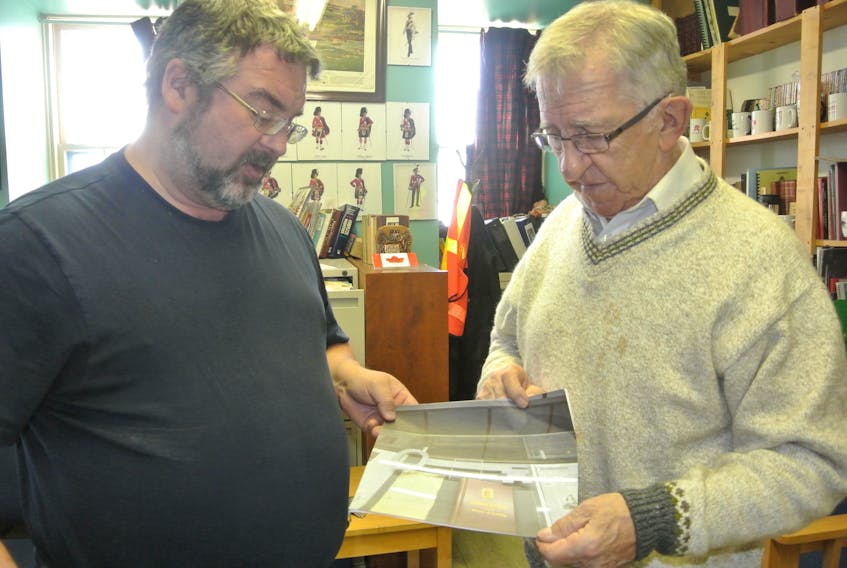AMHERST, N.S. – So how did a large aluminum key from Amherst make it into a military museum in Moscow? Yes, the Moscow in Russia.
It has been a mystery to Amherst’s Angus Furlong since 2010 when he received a photo taken by a relative in a Russian military museum. It’s a mystery that has finally been solved.
“It’s pretty neat to know how this key got from Amherst to Russia,” Furlong said. “When I first received the photo by email I wondered how it got there and now I know.”
The key says “Key to Amherst, Nova Scotia” on the front and the year 1943 is on it. Furlong said it had something to do with the Second World War and he knew at that time Amherst was home to numerous war industries and Russia, or the Soviet Union at that time, was allied with Canada, the United States, Britain and the Allied Forces.
Upon receiving the photo eight years ago, Furlong emailed it to the Cumberland County Museum, which in turn sent it to the North Nova Scotia Highlanders Regimental Museum. After that he sort of forgot about it, so when he was recently called by the regimental museum’s assistant curator with an answer to the mystery it caught him off guard.
first I wasn’t sure what he was talking about and thought he was trying to get in touch with someone else, but then it came to me and I was amazed at how the information filtered down and the mystery was solved,” Furlong said.
John Wales, who is the museum’s assistant curator, said he found the mystery a challenge. He sent emails to almost every Russian military museum and wasn’t making much progress until an official with the Central Armed Forces Museum in Moscow confirmed the key was there.

“I first tried the Victory Museum and the curator there told me it wasn’t there. I asked him if there were other museums and he sent me a list,” Wales said. “I reached out to the Central Armed Forces Museum and was told the medal was there and had been there since 1956.”
Wales continued to research the origin of the key and learned the Soviet consul in Halifax, Roman Ovsienko, and vice-consul Michael Kutsenko visited Amherst in September 1943 to visit various war industries and while here spoke to members of the Amherst Rotary Club.
It was during that meeting that then Mayor M.J. Kaufman presented Ovsienko with the key that had been manufactured earlier that day at Robb Engineering. That company and others, including Canada Car and Foundry, provided supplies to the Allied war efforts and some of those were sent to support Soviet forces in their fight on the Eastern Front against Nazi Germany.
Amherst’s town council even gave $100 to the Russian Relief Fund.
Wales said it’s amazing that a key from a small town in Nova Scotia would be in a military museum in Moscow.
“It’s interesting how it got there. Obviously, Mr. Ovsienko took the key back to the Soviet Union and gave it to the Ministry of Foreign Affairs and then some 12 or 13 years later it ended up in the museum,” Wales said. “Where it was during that period may never be known.”
Wales said he has no interest in asking the Russian government to send the key back to Amherst. He said the key is where it belongs and he said it would be pretty neat if people from here were to travel to Moscow to see it.
“That’s where it belongs. It was a gift to the Russian people from the people of Amherst,” Wales said. “Hopefully it will inspire Canadians and Nova Scotians to visit Moscow and see something from their home.”
Twitter: @ADNdarrell









